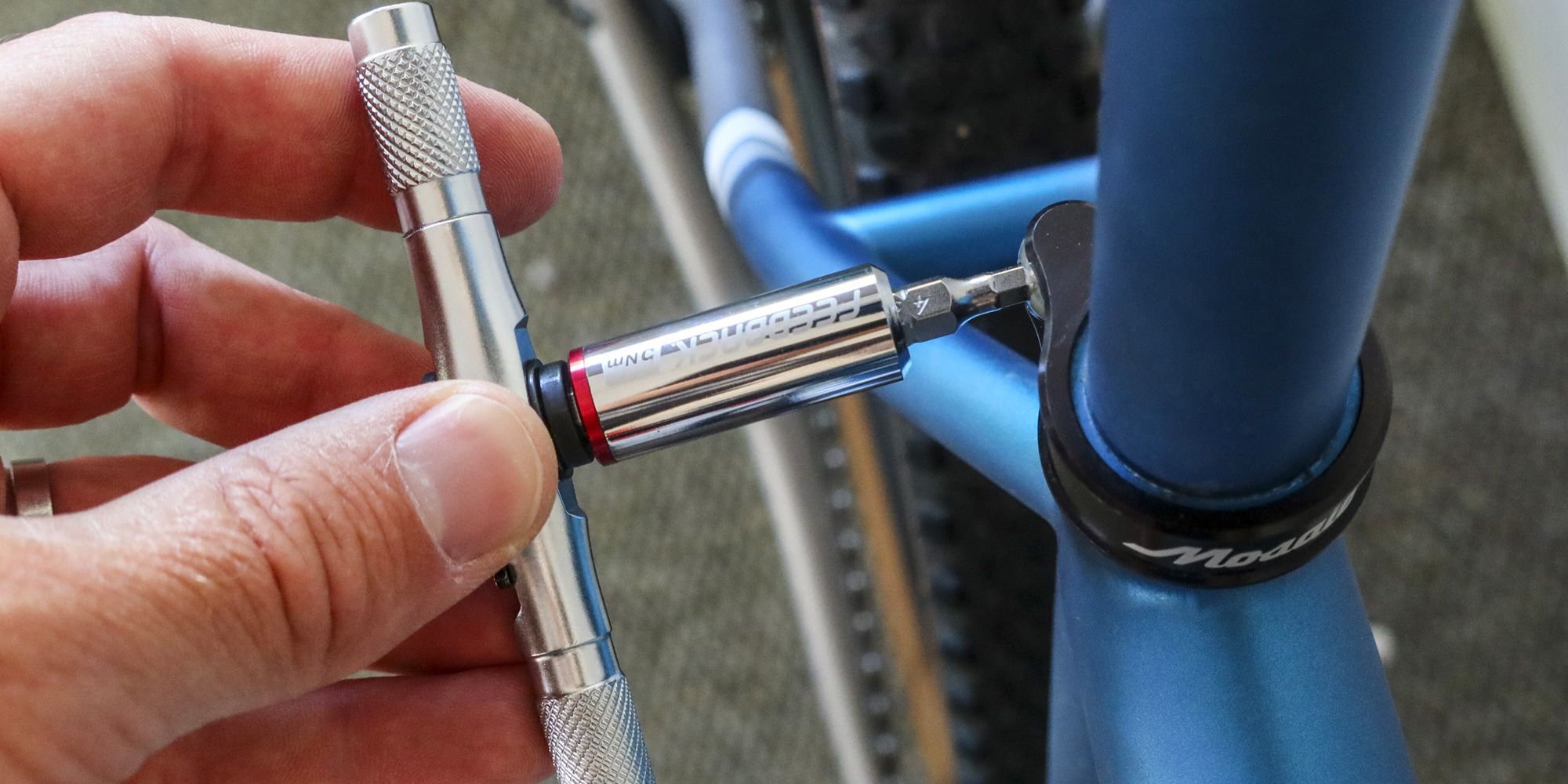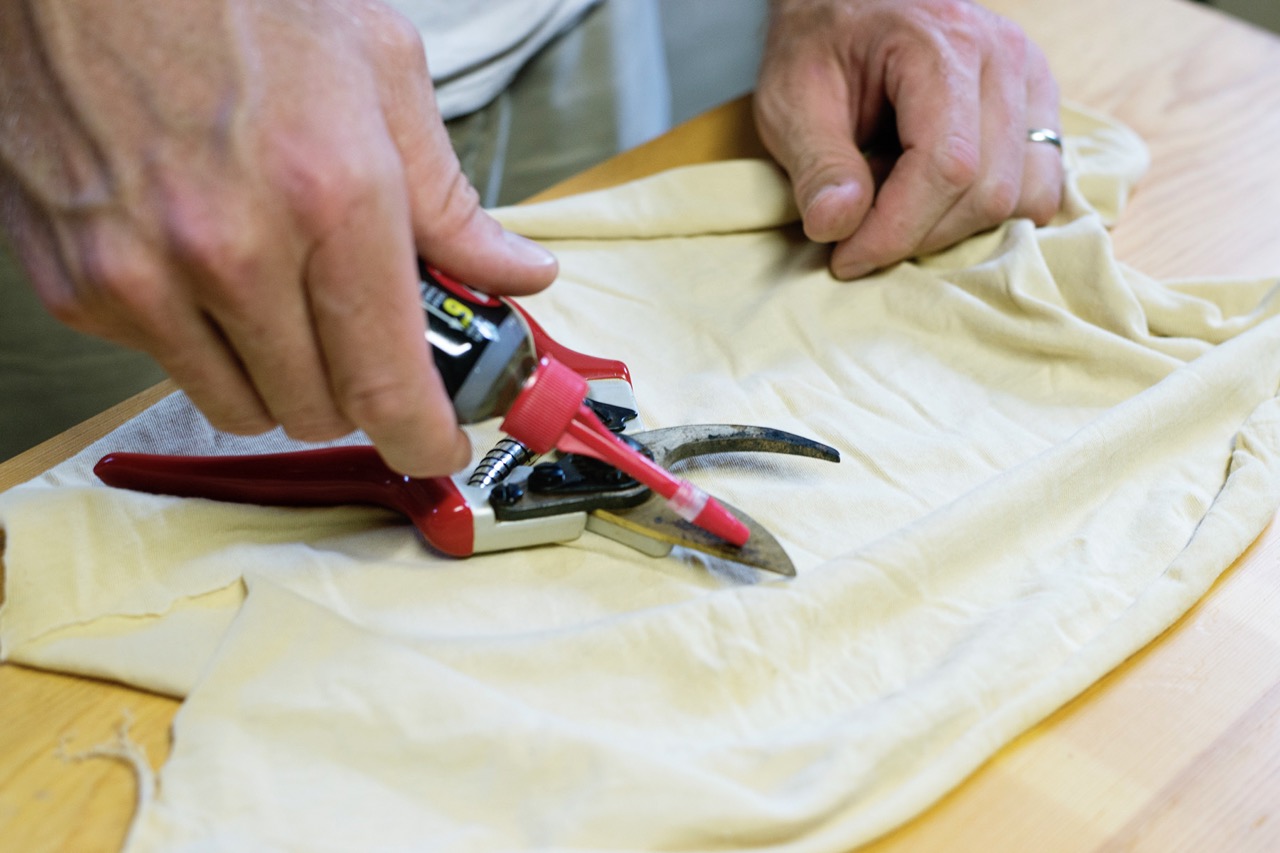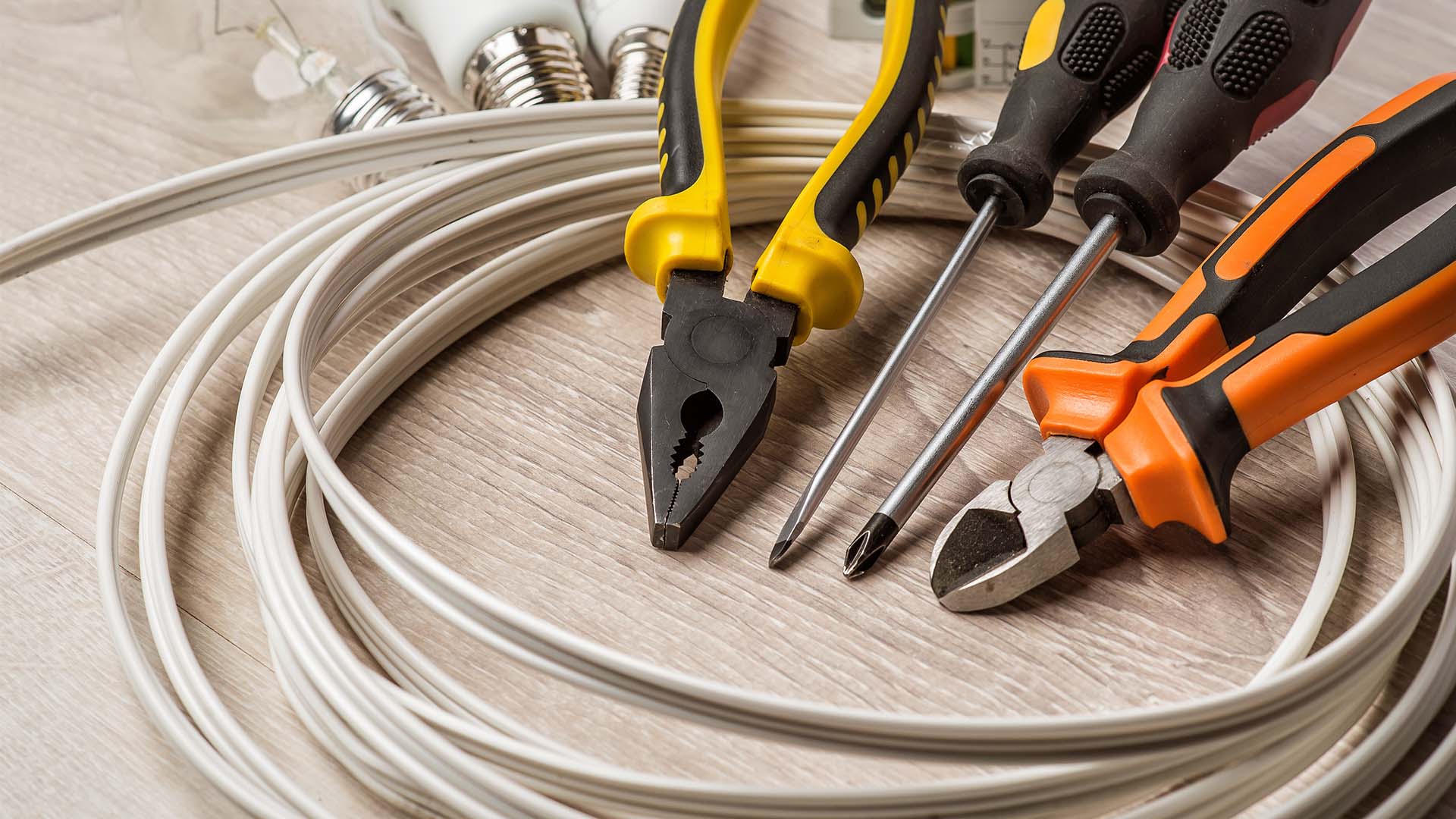Home>Articles>How To Incorporate Hand Tools Onto A Bike Frame


Articles
How To Incorporate Hand Tools Onto A Bike Frame
Modified: December 7, 2023
Learn how to incorporate hand tools onto your bike frame with our informative articles. Enhance your biking experience with our expert tips and tricks.
(Many of the links in this article redirect to a specific reviewed product. Your purchase of these products through affiliate links helps to generate commission for Storables.com, at no extra cost. Learn more)
Introduction
When it comes to cycling, having the right tools on hand is essential for maintenance and repairs. But what if you could take it a step further and incorporate those tools right onto your bike frame? It may sound unconventional, but integrating hand tools onto a bike frame can be a game-changer for cyclists.
In this article, we will explore the benefits of incorporating hand tools onto a bike frame, the types of hand tools that are suitable for this purpose, and provide a step-by-step guide on how to integrate them. We will also discuss tips for securing the tools properly and address potential challenges that may arise during the process.
By the end of this article, you’ll have a comprehensive understanding of how to incorporate hand tools onto your bike frame, allowing you to be prepared for any repair situation while enjoying the convenience and efficiency it brings.
Key Takeaways:
- Integrating hand tools onto a bike frame enhances accessibility, convenience, and safety, allowing cyclists to tackle repairs on the go and enjoy a smoother riding experience.
- Choosing the right tools, preparing the frame, and securing the attachments properly are crucial for successful integration, ensuring a hassle-free and efficient cycling experience.
Benefits of Incorporating Hand Tools onto a Bike Frame
Integrating hand tools onto a bike frame offers several advantages for cyclists. Here are some of the key benefits:
1. Accessibility and Convenience
Having hand tools readily available on the bike frame means you no longer have to carry a bulky tool kit or rummage through your bag when a repair is needed. Instead, you can easily access the necessary tools directly from your bike frame, saving you time and effort.
2. Space Optimization
By incorporating hand tools onto the bike frame, you can make better use of the available space. This is especially useful for cyclists who have limited storage options or prefer to travel light. It eliminates the need for additional tool storage and frees up space for other essentials.
3. Weight Distribution
Traditional tool bags or kits can add extra weight to your backpack or saddlebag, potentially affecting your balance and comfort during rides. Integrating hand tools onto the bike frame helps distribute the weight more evenly, enhancing your biking experience and reducing strain on your body.
Read more: What Grit Sandpaper For Bike Frame
4. Quick On-the-Go Repairs
Unexpected breakdowns and malfunctions can happen at any time during a ride. Having hand tools attached to your bike frame enables you to quickly address minor issues without needing to find a suitable spot to stop and unpack your tool kit. This allows you to continue your ride without significant disruptions.
5. Enhanced Safety
When a repair is needed on the road, it is crucial to ensure your safety and the safety of others. Integrating hand tools onto the bike frame eliminates the need to hold tools in your hands while riding, reducing the risk of accidents or distraction. It also ensures that the tools are securely fastened and less likely to fall off during bumpy rides.
6. Conversation Starter
Customizing your bike frame with integrated hand tools can make your bicycle a unique and eye-catching piece. It not only showcases your creativity but also serves as a great conversation starter among fellow cyclists or bike enthusiasts.
Incorporating hand tools onto your bike frame is a practical, space-saving, and efficient solution for cyclists. It enhances accessibility, convenience, and safety, allowing you to tackle minor repairs on the go and enjoy a smoother and more enjoyable riding experience.
Types of Hand Tools for Bike Frames
When it comes to integrating hand tools onto a bike frame, it’s important to choose tools that are durable, lightweight, and compatible with the frame and components of your bicycle. Here are some common types of hand tools that are suitable for integrating onto a bike frame:
Read more: How To Hand Form Body Panels With Hand Tools
1. Hex Wrenches
Hex wrenches, also known as Allen keys, are essential for adjusting various components of a bike, such as tightening bolts on the handlebar, stem, seat post, and derailleur. Choose hex wrenches in common sizes like 4mm, 5mm, and 6mm, and ensure they have a secure attachment system to the bike frame.
2. Screwdrivers
A small, compact screwdriver is useful for adjusting screws on components like the derailleur, brake assemblies, and derailleur hangers. Look for a screwdriver with interchangeable bits and a secure attachment mechanism to keep it firmly in place on the bike frame.
3. Tire Levers
Tire levers are essential for removing and installing tires during repairs or tire changes. Choose lightweight and durable tire levers that can easily attach to the bike frame, ensuring they are readily accessible when needed.
4. Chain Tool
A chain tool is necessary for repairing or replacing a broken chain on the go. Opt for a compact chain tool with a sturdy attachment system, allowing you to fix your chain quickly and effectively.
Read more: How To Hand Quilt Without A Frame
5. Spoke Wrench
A spoke wrench is essential for adjusting the tension of your bicycle’s spokes. This tool is particularly useful for long rides or tours, as it allows you to fix minor issues with the wheel while on the road. Look for a spoke wrench that securely attaches to the bike frame.
6. Multi-tool
A multi-tool is a versatile option that combines several common bike tools into one compact device. Look for a multi-tool that includes various hex wrench sizes, screwdriver heads, tire levers, and other essential functions. Ensure it has a secure attachment system to prevent any movement or loss while riding.
Remember to choose high-quality tools that are specifically designed for bicycles to ensure durability and reliability. Additionally, consider the size and weight of the tools, as well as their attachment mechanisms, to ensure a secure and convenient integration onto your bike frame.
Preparing the Bike Frame for Hand Tool Integration
Before you start incorporating hand tools onto your bike frame, it’s important to prepare the frame properly to ensure a secure and stable integration. Here are some key steps to follow:
1. Clean the Frame
Begin by thoroughly cleaning the areas where you plan to attach the hand tools. Use a mild detergent and water to remove any dirt, grease, or debris. Ensure that the frame is completely dry before moving on to the next steps.
2. Determine the Attachment Locations
Look for suitable areas on the bike frame where you can securely attach the hand tools. It’s crucial to find locations that offer stability and won’t interfere with the functioning of other bike components, such as the suspension or brake cables.
3. Consider Frame Material and Geometry
Take into account the material and geometry of your bike frame when choosing the attachment locations. Carbon frames require special care to avoid damaging the material, so it’s advisable to consult the bike manufacturer’s guidelines or seek professional advice if you have a carbon frame. For metal frames, ensure that the attachment locations are structurally sound and won’t compromise the frame’s integrity.
4. Prepare the Attachment Surfaces
Depending on the type of attachment system you’re using, you may need to roughen the surface slightly to improve adhesion. You can lightly sand or roughen the attachment area using fine grit sandpaper. For adhesive-based attachments, clean the surface with isopropyl alcohol to ensure maximum adhesion.
5. Test Positioning and Accessibility
Before permanently attaching the hand tools, test the positioning and accessibility to ensure they are easily reachable while riding. It’s important to place them in a position that allows for natural and comfortable access without interfering with your pedaling or steering.
Read more: How To Market Hand Tools
6. Secure Attachment Mechanism
Choose a secure attachment mechanism based on the type of hand tools and the bike frame. Options include straps, Velcro, adhesive-backed mounts, or customized brackets. Make sure the attachment mechanism is sturdy, reliable, and capable of withstanding vibrations and rough terrains.
By following these steps to prepare your bike frame, you’ll ensure a solid foundation for integrating hand tools that are accessible, secure, and won’t compromise the functionality or structural integrity of your bike.
Step-by-Step Guide to Incorporating Hand Tools onto a Bike Frame
Integrating hand tools onto your bike frame requires careful planning and execution. Follow these step-by-step guidelines to ensure a successful integration:
Step 1: Gather the Necessary Tools
Before you begin, gather all the tools and materials you’ll need for the integration. This may include hand tools, attachment mechanisms (straps, Velcro, adhesive-backed mounts, etc.), a measuring tape, and any necessary cleaning supplies.
Step 2: Clean and Prepare the Attachment Areas
Thoroughly clean the areas on the bike frame where you plan to attach the hand tools. Ensure the surfaces are free of dirt, grease, and debris. If necessary, lightly sand or roughen the attachment areas to improve adhesion.
Read more: How To Label Your Hand Tools
Step 3: Measure and Position the Hand Tools
Using a measuring tape, carefully measure and mark the desired positions for each hand tool on the bike frame. Position them in a way that is easily accessible and does not interfere with other bike components or your riding motion.
Step 4: Attach the Hand Tools
Depending on the chosen attachment mechanism, follow the manufacturer’s instructions to attach each hand tool securely to the frame. Make sure they are fastened tightly and will not come loose during rides or when encountering bumps and vibrations.
Step 5: Test the Integration
After attaching the hand tools, conduct a thorough test to ensure their stability and functionality. Shake the bike frame gently to check if any of the tools are loose or have excessive movement. Test the accessibility of the tools to ensure you can reach them comfortably while riding.
Step 6: Make Adjustments if Necessary
If you find any issues or areas for improvement during the testing phase, make the necessary adjustments. This may involve repositioning the tools, tightening the attachment mechanism, or using additional padding or insulation to reduce any noise or vibrations.
Step 7: Finalize and Secure the Integration
Once you are satisfied with the placement and functionality of the hand tools, take the time to secure all the attachments thoroughly. Double-check the tightness of fasteners and the stability of the tools to ensure they will remain secure during rides.
By following this step-by-step guide, you can successfully integrate hand tools onto your bike frame, ensuring they are securely attached, easily accessible, and enhance your overall cycling experience.
Tips for Properly Securing Hand Tools on the Bike Frame
Ensuring that your hand tools are securely attached to the bike frame is crucial for a safe and hassle-free cycling experience. Here are some tips to properly secure the hand tools:
1. Choose the Right Attachment Mechanism
Select an attachment mechanism that is suitable for the type of hand tools you are integrating and the frame material. Consider options such as straps, Velcro, adhesive-backed mounts, or customized brackets. Choose a mechanism that is sturdy, reliable, and capable of withstanding vibrations and rough terrains.
2. Check Fasteners and Connections
Regularly inspect the fasteners and connections of the attachment mechanism to ensure they are tight and secure. Over time, screws or bolts may loosen due to vibrations or movement. Tighten them as needed to prevent any movement or potential loss of the hand tools while riding.
Read more: How To Design Hand Tools
3. Use Additional Padding or Insulation
If you notice any excessive noise or vibrations coming from the hand tools or their attachment points, consider adding padding or insulation. This can help reduce noise and prevent any scratching or damage to the bike frame. Use materials like foam, rubber, or adhesive-backed padding to provide an additional layer of protection and stability.
4. Test for Stability
After attaching the hand tools, give them a gentle shake or simulate riding conditions to test their stability. Ensure that the tools remain firmly in place and do not move excessively. If you notice any movement or instability, reevaluate the attachment mechanism or make necessary adjustments to enhance stability.
5. Regularly Inspect the Tools and Attachment Points
Consistently inspect the condition of the hand tools and their attachment points on the bike frame. Look for any signs of wear, damage, or loosening. If you notice any issues, address them immediately by tightening the fasteners, replacing worn-out parts, or repositioning the tools if necessary.
6. Consider Redundancy in Attachments
To ensure the utmost security, consider using redundant attachment points for critical or essential hand tools. This means attaching them using multiple mechanisms or points of contact. This redundancy can provide an additional layer of assurance, especially for tools that are vital for emergency repairs.
By following these tips, you can properly secure your hand tools onto the bike frame, minimizing the risk of loss or damage while ensuring they remain easily accessible during your rides.
Read more: How Are Hand Tools Classified?
Potential Challenges and How to Overcome Them
While incorporating hand tools onto a bike frame can be a convenient and practical solution, there are a few potential challenges that you may encounter. Here are some common challenges and tips on how to overcome them:
1. Compatibility Issues
One challenge you may face is ensuring that the hand tools you want to integrate are compatible with your specific bike frame. Different bike frames may have varying geometries, materials, and attachment points. To overcome this challenge, carefully research and choose hand tools that are designed to work with your specific bike frame. Consult with bike shop experts or seek advice from the tools’ manufacturers.
2. Weight Distribution
Integrating hand tools onto the bike frame may affect the weight distribution, potentially impacting your balance and handling. To overcome this challenge, consider the weight of the tools you plan to integrate and strategically position them on the frame. Distribute the weight evenly on both sides of the frame to maintain balance and stability. Additionally, practice riding your bike with the integrated tools to get accustomed to any changes in weight distribution.
3. Frame Damage
Improper installation or the use of unsuitable attachment mechanisms can potentially damage your bike frame. To avoid frame damage, ensure that the attachment mechanisms you choose are compatible with your frame material and are installed correctly. Follow the manufacturer’s instructions and seek professional assistance if needed. Regularly inspect the attachment points and the frame for any signs of wear or damage, and address them promptly to prevent further issues.
Read more: How To Test Hand Tools
4. Noise and Vibration
Sometimes, the integrated hand tools may generate noise or vibrations while riding, which can be a distraction or annoyance. To overcome this challenge, use additional padding or insulation between the hand tools and the frame to dampen vibrations and reduce noise. Experiment with different materials, such as foam or rubber, to find the best combination that minimizes unwanted sounds and vibrations.
5. Accessibility Concerns
While integrating hand tools onto the bike frame increases accessibility, it’s important to ensure that the tools are easily reachable and do not impede your riding motion. To address accessibility concerns, test the positioning and accessibility of the hand tools before finalizing their attachment. Make any necessary adjustments to ensure that they can be accessed comfortably while riding, without interfering with your pedaling or steering.
6. Regular Maintenance
Integrated hand tools require regular maintenance to ensure their optimal functionality and safety. Be proactive in inspecting the tools, attachment mechanisms, and the bike frame itself. Look for any signs of wear, damage, or loose fasteners. Clean the tools regularly and ensure that they are properly lubricated. Regular maintenance will help prevent any unexpected issues during your rides.
By being aware of these potential challenges and following these tips, you can overcome hurdles and enjoy the benefits of incorporating hand tools onto your bike frame. Regular maintenance, careful installation, and thoughtful positioning will help ensure a seamless and efficient integration that enhances your cycling experience.
Conclusion
Incorporating hand tools onto a bike frame can revolutionize your cycling experience. The accessibility, convenience, and efficiency that this integration brings can make maintenance and repairs on the go a breeze. By following the steps outlined in this article and considering the tips provided, you can successfully integrate hand tools onto your bike frame.
From hex wrenches and screwdrivers to tire levers and chain tools, there are various types of hand tools suitable for integration. Choose tools that are durable, lightweight, and specifically designed for bicycles. Ensure that they are securely fastened to the frame and easily reachable while riding.
While there may be challenges to overcome, such as compatibility issues, weight distribution, and potential frame damage, thorough research, careful installation, and regular maintenance will help address these concerns. By taking the necessary precautions and seeking professional advice when needed, you can prevent any potential issues and enjoy the benefits of having hand tools integrated onto your bike frame.
Integrating hand tools onto your bike frame offers accessibility, space optimization, weight distribution, quick on-the-go repairs, enhanced safety, and even serves as a conversation starter among fellow cyclists. It is an innovative way to have the tools you need readily accessible without the need for carrying a separate toolkit.
In conclusion, incorporating hand tools onto a bike frame is an excellent way to be self-reliant and prepared for any maintenance or repair situations while cycling. By following the guidelines provided in this article, you can enjoy the convenience and efficiency that integrated hand tools bring, ensuring a smoother and more enjoyable biking experience.
Frequently Asked Questions about How To Incorporate Hand Tools Onto A Bike Frame
Was this page helpful?
At Storables.com, we guarantee accurate and reliable information. Our content, validated by Expert Board Contributors, is crafted following stringent Editorial Policies. We're committed to providing you with well-researched, expert-backed insights for all your informational needs.






0 thoughts on “How To Incorporate Hand Tools Onto A Bike Frame”